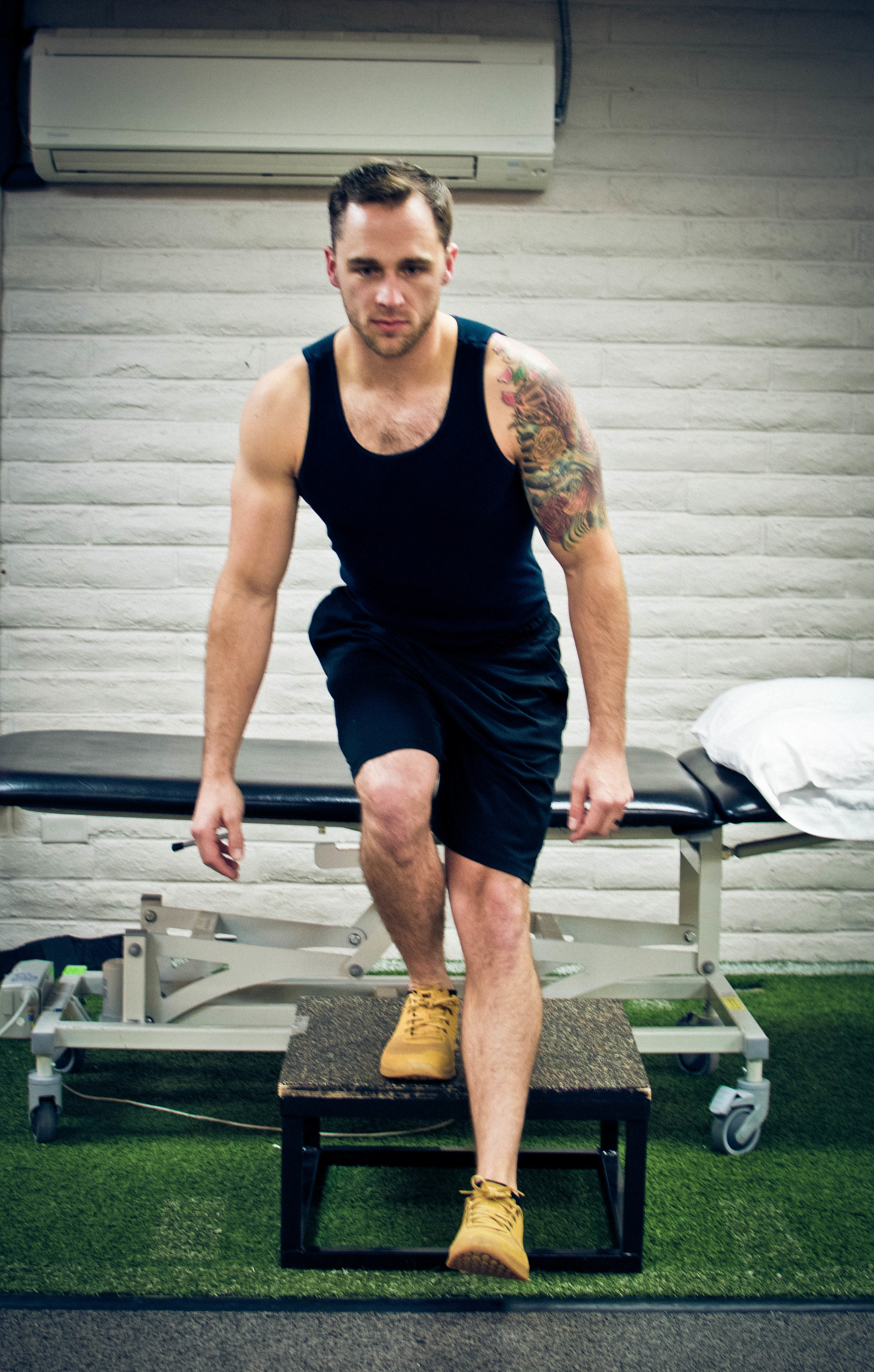The knee is a vulnerable joint at times due to its’ location adjacent to the two long levers of our thigh and leg bones. The length of the levers allows the ankle and hip to exert a high amount of forces across the knee. The importance of treating these adjacent joints in patients with knee pain is reflected in our current understanding of functional movements including walking, stair climbing, hiking, and running. Patient’s who experience knee pain during these movements frequently demonstrate hip weakness and an inability to control their knee position during single limb loading. The increased load under the knee cap is due to abnormal pressure and contact area on the thigh (femur). A recent biomechanical analysis quantifies the knee cartilage stresses at the patellofemoral joint highlighting the importance of analyzing the hip in patients with knee pain.
Liao and colleagues analyzed cartilage stresses between the knee cap and thigh during squatting tasks with varying degrees of thigh and shin rotation (Clin Biomech. 2018). The authors found a progressively greater cartilage stresses with increasing degrees of thigh rotation, but found a decrease in cartilage stress with progressive shin rotation. Additionally, progressive thigh movement toward the midline of the body also was shown to increase knee cartilage loading. The authors concluded thigh internal rotation and movement toward the midline had the greatest impact on knee cartilage forces. These findings support prior research studies highlighting the importance of examining and treating the hip in patients with knee pain.
Click Here to learn more about your knee mechanics from the experts at MEND

